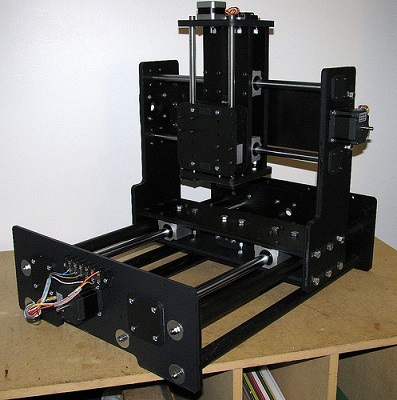Lasers offer solutions to several processes in the field of processing metals such as engraving. The main advantage they have over other processing mechanisms is that minimal contact is required. But even with these strengths, laser cutting comes with its own challenges which ultimately affect the effectiveness of the whole process. These challenges are as a result of several factors which include:

Material thickness
The thicker the material, the less effective laser cutting will be. Take for instance, carbon steel material that happens to be more than four inches thick. Getting a clean cut on such would be difficult. Increased material thickness also heightens the possibility of a thermal runaway or a blowout. Factors that determine the thickness limitation in laser cutting include alloy vaporization point, heat conductivity, and part geometry, surface tension of molten material, surface reflection and type of alloy. To improve laser performance, focusing the beam, assist gas and reducing spot size helps.
Material quality
This is probably the one factor that most affects the laser cutting process. One of the main elements that mainly affect the material quality is the surface finish. A case in the study is steel that contains impurities on the surface. These are very sensitive to thermal process, especially when oxygen gas is used as an assist gas. Surfaces that are not smooth also affect the laser focus, hence a low-quality cut.
Laser cutting often tends to leave a layer of melted material on the side of cut metal. As this deposited material often stressed, cracks are bound to happen, compromising the quality of a cut. The cracks may develop into major security issues in future. This is a regular scenario where oxygen is used and to minimize the possibility of a crack, high pressure nitrogen should be used as the assist gas. This is because nitrogen tends to transform the laser to a controllable welding tool with the ability to blow away molten material.
Material composition
Material composition influences laser cutting more dramatically than other methods of processing metals. Viscosity and conductivity of metals are two of the main factors considered here.
Depending on viscous a metal is in molten state is, the degree of dross will vary. Low viscosity will often result in dross getting blown away. On the other hand, thick viscosity often causes the dross to stick to the metal. This also raises the temperature of the particular part on which dross clings.
Carbon content in a material also results in faster combustion when a material comes into contact with the laser beam. This often results in high quality processing and hence the use of carbon-steel to make structural steels.
Due to the surface condition and the variation of elements in different materials, varied reactions tend to occur during the thermal process. These can lead to scaling, surface impurities, coatings and accumulation of filth.
Distortion
Distortion occurs when a heat affected zone, otherwise known as HAZ, is created during the processing. This happens when the critical transformation temperature is exceeded. Heat affected zones are susceptible to cracking should stress be applied to a metal. Thin materials with a thickness of less than 0.005 inches are likely to distort. This is mainly because a recast layer forms on the metal. Re-solidification of this material easily causes warped material. Sudden surges in temperature and rapid solidification on the sides as well as on the cutting zone are the main factors that cause formation heat affected zones. The use of a water quenching system reduces the chances of distortion significantly.
Setup time
When working with unfamiliar material, the setup time taken to prepare the cutting process can be long. Several factors, including focal length, assist gas, optical focal length, and speed and gas pressure have to be estimated correctly. Otherwise, the quality of the final cut will be compromised.
Steps that can be taken to reduce the setup time including relying on a reliable database of tested parameters, creating modular fixtures, use of shuttle tables, scheduling similar jobs to run consecutively and building ergonomic workstations.
Drilling
Drilling with laser machines can be very time saving. However, it’s not one of the best techniques when creating starting holes. This is because laser beam drilling has been known to result in blowouts. This is common in cases where the diameter of the hole is large in relation to the thickness. The use of continuous wave laser also increases the chances of blowouts during drilling.
To avoid blowouts during drilling, consider changing parameter specifications. Reducing the pressure of the gas to a level that combustion can still occur, cleaning the material surface and controlling the laser’s focal point important to prevent blowouts.
There are several ways that can affect the quality of laser processing either positively or negatively. Knowing how the cut quality can be compromised and how to prevent such occurrences is important in ensuring high quality laser engraving in Sydney.

Comments are closed.